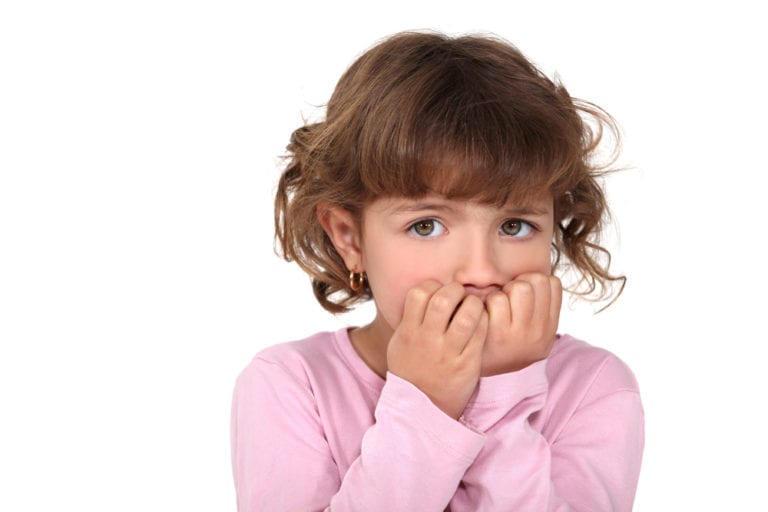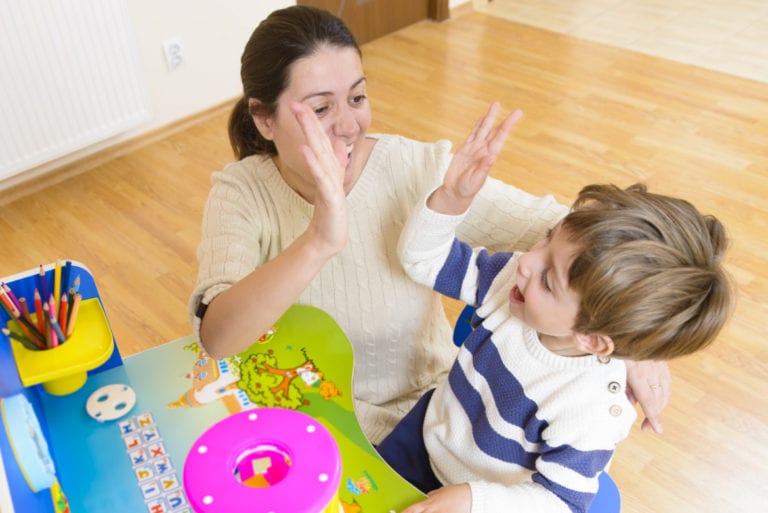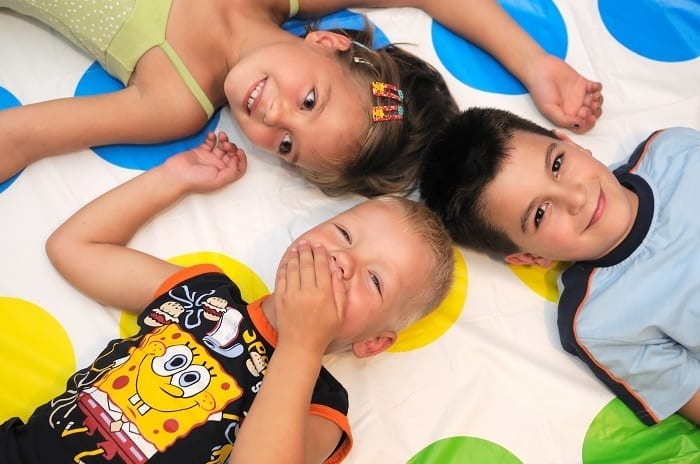5 Tips on How to Encourage Your Kids to Help with Spring Cleaning
Disclosure: This post may contain affiliate links, meaning I may get a small commission if you decide to make a purchase through my links, at no cost to you.
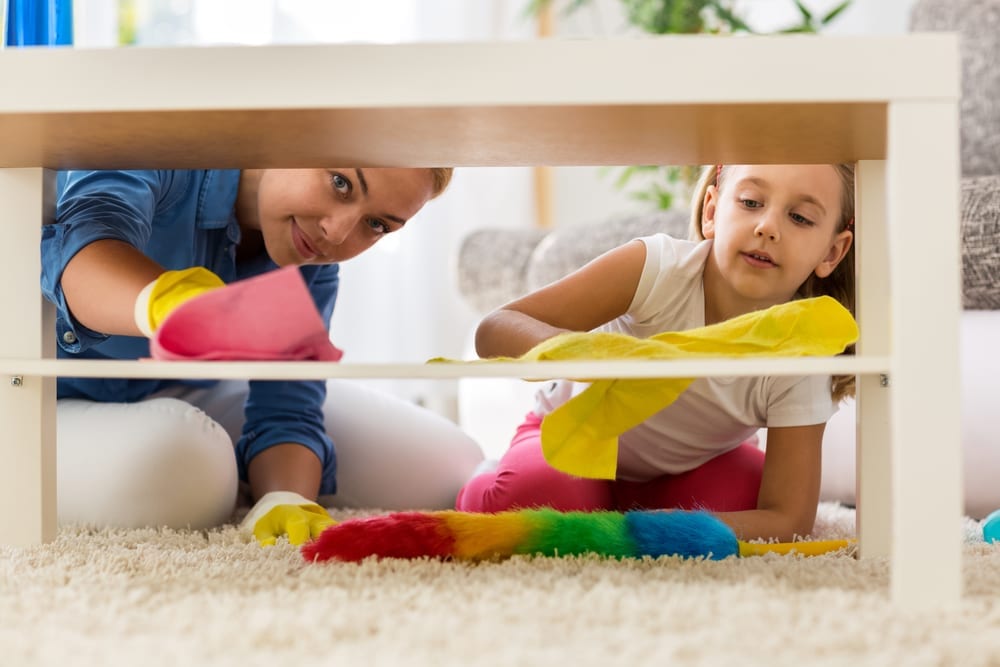
Spring cleaning is a fresh start, but let’s face it, getting the kids involved can feel like pulling teeth. Your narrative doesn’t need to follow the script of wrestling with reluctance. We’re about to dive into practical ways to turn groans into grins when brooms and mops are in hand.
Discovering the balance between keeping your space neat and teaching kids crucial life lessons comes from delegating tasks that suit their age. From making chore time fun with games and music to using safe, DIY cleaning solutions, we’ve got you covered.
Additionally, by demonstrating and appreciating their hard work, you’ll see how this seasonal tidying morphs from potential conflict into moments cherished together. Are you set for a tidier space and more joyful children? Let’s get started.
Related Reading:
5 Ways to Motivate Your Kids to Get Things Done
Table Of Contents:
- Spring into Cleaning: Engaging Kids in Household Chores
- Age-Appropriate Tasks for Every Child
- Transforming Chore Time into Fun Time
- Building Life Skills Through Spring Cleaning
- Safe and Natural Cleaning Solutions for Families
- Setting a Positive Example for Your Children
- Rewards and Recognition for a Job Well Done
- The Psychological Benefits of Including Kids in Spring Cleaning
- FAQs in Relation to Encourage Your Kids to Help With Spring Cleaning
- Conclusion
Spring into Cleaning: Engaging Kids in Household Chores
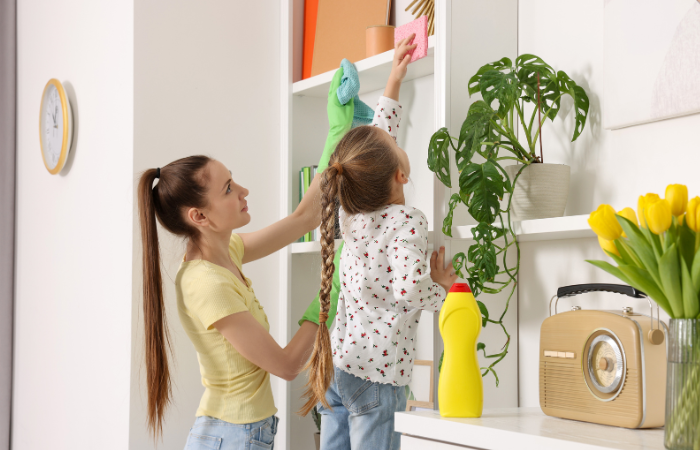
The Importance of Starting Young
Tackling spring cleaning with your little helpers can seem like herding cats, but believe it or not, getting kids involved early sets the stage for a lifetime of good habits. Mulling over it, guiding a toddler in the art of tidying up their playthings plants the seeds for organizational prowess that will flourish well past the era of toy-filled afternoons.
This isn’t just about keeping your house tidy; it’s about instilling valuable life skills in your children. Studies have shown that involving kids in household chores from an early age encourages responsibility and boosts self-esteem. So while they might grumble now, they’ll thank you later.
Making Chores Fun and Rewarding
If the idea of making bed-making competitions sounds odd to you, welcome to parenting 101—where creativity meets chore time. Transforming mundane duties into playful challenges can often inspire children to eagerly participate. Ever tried seeing who can match socks from the laundry fastest? It’s surprisingly fun and gets those pesky socks paired up too.
Reward systems also work wonders. A simple sticker chart or earning points towards a family movie night can motivate even the most reluctant helper. Remember, positive reinforcement goes miles further than nagging ever will.
Specific Ideas to Encourage Your Kids to Help with Spring Cleaning
Try these ideas to encourage your kids to help with spring cleaning efforts and teach them the importance of hard work:
Treasure Hunt Cleanup: Turn decluttering into a game where every piece of clutter collected leads to clues for a treasure.
Chore Chart Stars: Implement a chore chart where tasks are stars in a galaxy, and completing them earns points towards a reward.
Cleaning Olympics: Host a family “Olympics” with cleaning tasks as events. The fastest, neatest, or most creative efforts win special medals.
Storytime Sorting: Sort items while telling stories about them, making cleanup a narrative adventure.
Dance Party Dust-Off: Crank up their favorite tunes and have a dusting and sweeping dance party.
How to Encourage Teens to Help with Spring Cleaning

Let’s be honest, older children, especially teens, won’t be tempted by treasure hunts (unless they are filled with money). Rather than dressing the day up as a treasure hunt, creating fun chore charts or a dance party, be honest.
Tell the older kids that you need help getting some spring cleaning done and offer a fun ending to your busy day of cleaning.
- Offer to end the day by getting their choice of takeout and renting a movie of their choosing. Not only will this give your family time to bond, but you’ll also get some spring cleaning done. This is a win-win situation!
- Refrain from approaching your teens the day of your spring cleaning. They may already have plans. Approach them a few days in advance and set up a day that is convenient for everyone in the family. For busy teens, tt may work better to encourage your kids to help with spring cleaning for a couple of hours over several days.
- Older children can handle bigger jobs. It’s best to let them choose a task (from a list that you’ve created) and tackle it on their own. By doing so, they’ll feel as if they had a say in the task at hand.
Positive Discipline in Action
So what do you do when enthusiasm wanes mid-clean? This is where positive discipline comes into play—a method emphasizing teaching over punishment. For example, rather than scolding them for unfinished tasks, suggest how they might manage their time better next round. It’s all about guiding them toward solutions rather than focusing on what went wrong.
Incorporating these strategies makes spring cleaning less of a chore and more of an opportunity for growth—for both your home’s cleanliness and your child’s development.
Key Takeaway:
Get kids involved in spring cleaning early to teach them responsibility and boost self-esteem, making chores fun with games and rewards. This approach lays the groundwork for lifelong organization skills while turning tidying up into a growth opportunity.
Age-Appropriate Tasks for Every Child
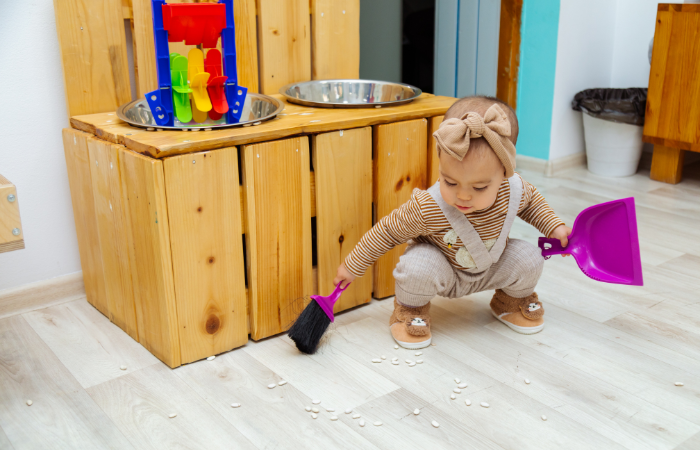
Best Chores for Toddlers and Preschoolers
Toddlers are like little tornadoes of energy, aren’t they? But even these mini whirlwinds can help around the house. Start simple: picking up toys is a great first chore. Instructing them in the art of managing their possessions nurtures responsibility and stewardship. Plus, turning it into a game can make it fun—think “toy roundup time.” Another hit is helping to feed pets because what toddler doesn’t love pouring food into a bowl? Lastly, wiping down low tables gives them a sense of accomplishment (just hand them a damp cloth; we’re not aiming for perfection here).
Moving on to preschoolers, you can up the ante slightly. Sorting laundry by color introduces basic concepts of organization (and secretly sneaks in some learning about colors). Helping set the table lets them feel involved in meal prep without being near anything too hot or sharp. And dusting? Give them an old sock as a glove and watch those shelves become slightly less dusty.
Ideal Tasks for Kids Ages 5 to 8
This age group starts getting serious about chores—they’re ready. Making their bed every morning sets a positive tone for the day. Clearing plates after meals encourages responsibility (and appreciation for whoever cooked). Nurturing plants by watering them not only invites the outdoors inside but also cultivates a sense of empathy for life forms other than our own.
But why stop there? They’re also at an ideal age to learn more complex tasks, like sweeping floors or folding simple clothes items such as towels or shirts.
Assignments for Tweens and Teens
The big kids on the block can handle much more—and crave independence while doing so. Laundry from start to finish becomes their domain; goodbye mismatched socks courtesy of mom or dad. Preparing simple meals not only unburdens parents but also equips teens with essential life skills before flying solo.
Cleaning bathrooms might not be glamorous but knowing how keeps future roommates happy—a win-win situation all around.
Key Takeaway:
Get kids of all ages in on spring cleaning with age-appropriate chores: toddlers can pick up toys, preschoolers sort laundry, and older kids tackle their own laundry and meal prep. It’s fun, teaches responsibility, and gives them a sense of accomplishment.
Transforming Chore-Time into Fun Time

More Creative Chore Systems That Work
Ever thought of turning chore time into a game show? Well, it’s about time we did. Introducing “chore sticks” – think popsicle sticks with chores written on them, but with a twist. Each stick also has points based on the difficulty level or fun factor. Kids get to draw and collect points for prizes at the end of the week.
Another system that works wonders is using a dart board where each section corresponds to different chores or rewards. It adds an element of surprise and excitement – who knew taking out trash could feel like hitting a bullseye?
Incorporating Music and Games into Cleaning
We’ve all tried bribing our kids with cookies to get them to clean up, but have you ever thrown a dance party in your living room while doing it? Crank up their favorite tunes and challenge them to ‘freeze’ when the music stops – only if they’re holding something that needs to be put away.
To elevate the enjoyment, orchestrate a series of playful scavenger hunts for chores such as retrieving playthings scattered across the carpet. Divide your crew into teams, set timers, and watch as chaos turns into teamwork (and your house magically cleans itself).
With these methods we transform chore time from dreaded duties into delightful diversions, teaching valuable life skills along the way without even realizing it because let’s face it: anything can be made better with just a touch of creativity…or maybe some glitter.
Building Life Skills Through Spring Cleaning
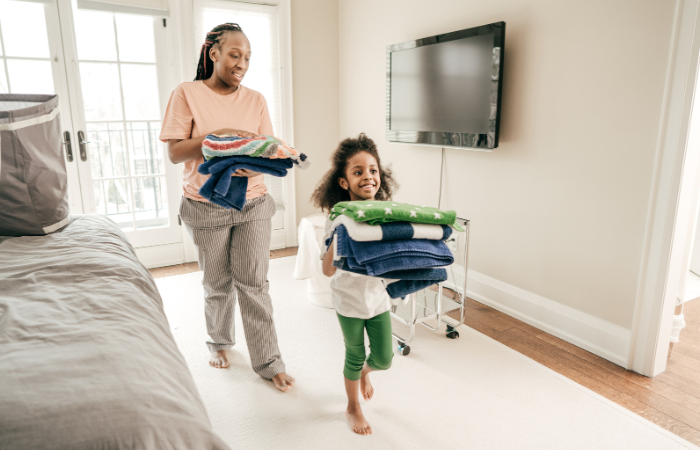
The Connection Between Chores and Future Success
Engaging in spring cleaning transcends mere dust removal; it serves as a fertile ground for imparting crucial life competencies to youngsters. Think about it: when kids learn to tackle chores, they’re also learning responsibility, time management, and problem-solving. These are the same skills that scream ‘hire me’ in the job market later on.
A study highlighted by Psychology Today shows that grit—perseverance for long-term goals—is a significant predictor of success. So yes, making your bed does have something to do with landing your dream job.
Developing Fine Motor Skills Through Cleaning Activities
Beyond career prep, spring cleaning can be a sneaky way to boost those fine motor skills in younger children. Ever tried wiping down windows? You’d be surprised at the level of dexterity required to effectively manage that task. Tasks like spraying cleaners (eco-friendly, of course) or scrubbing surfaces give little hands a workout without them even knowing it.
If you’re looking for ways to get started or need some DIY cleaner recipes safe enough for kid participation, Good Housekeeping has some great suggestions. Demonstrating the mixture of basic elements such as vinegar and baking soda not only purifies your living space but also transforms tidying up into an unexpected lesson in science.
Safe and Natural Cleaning Solutions for Families

Introducing Kids to Eco-Friendly Products
If you thought teaching your kids about the birds and the bees was tough, wait until you introduce them to eco-friendly cleaning products. But fear not. It’s easier than it sounds. Start by showing them how everyday items like vinegar can make windows sparkle without leaving streaks or harsh chemical smells behind. This isn’t just a lesson in cleaning; it’s a science experiment right at home.
Discuss the significance of opting for gentler options, not just for our well-being but also to safeguard the ecosystem we share. A simple explanation? “We’re using baking soda instead of bleach because we want fishies swimming, not floating.” It might get a laugh, but it’ll stick with them too.
DIY Natural Cleaners You Can Make Together
Gather around, family—it’s time to play mad scientist (minus the evil laugh). Crafting these eco-friendly cleaning solutions at home not only sparks joy and simplicity but also instills a proud feeling of achievement in all involved. Plus, who doesn’t love mixing stuff together to see what happens?
Start with an all-purpose cleaner recipe: mix equal parts water and white vinegar in a spray bottle Good Housekeeping recommends adding lemon rind and rosemary sprigs for extra scent points. Letting kids help measure ingredients teaches math skills—just don’t forget goggles for that authentic scientist look.
The real magic happens when they use something they’ve made themselves to clean up after crafting or cooking messes—a powerful moment that connects effort with the outcome.
Setting a Positive Example for Your Children
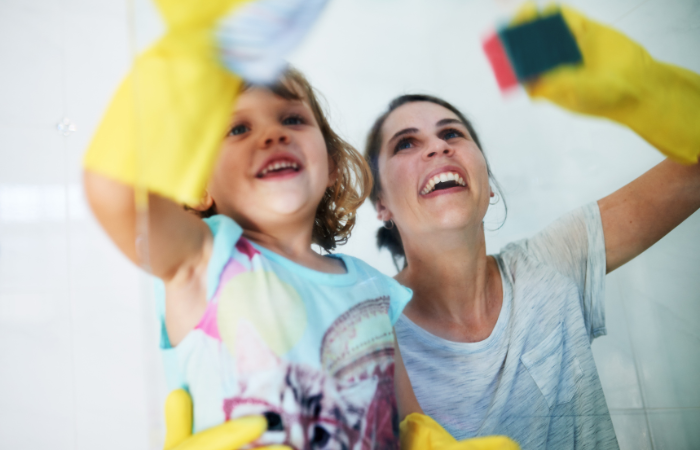
Leading by Example in Household Tasks
Kids are like sponges, soaking up every action and word we say. That’s precisely why it’s so important to embody the actions we want to see, particularly in managing household duties. If you grumble about cleaning the dishes or making your bed, guess who else will start seeing these tasks as dreadful? Exactly. So next time you tackle those household duties, do so with a smile (even if it’s forced) and an upbeat tune.
To make this more relatable, think of yourself as the captain of a pirate ship where chores are treasures waiting to be discovered. Embracing a bit of excitement transforms everyday chores into thrilling quests for the imaginative.
Making Family Time Out of Spring Cleaning
Sometimes all you need is to frame things differently. Instead of presenting spring cleaning as a list of daunting tasks, pitch it as “The Great Family Treasure Hunt.” Everyone gets assigned roles based on their age-appropriate abilities —from tiny tots picking up toys to teens managing more challenging missions like organizing closets.
Transforming a day of chores into family bonding time not only imparts essential skills to the youngsters but also fortifies the ties that bind us as a family. You’re not just tidying up; you’re creating memories together. And remember: recognizing everyone’s effort at the end with something simple like homemade pizza night can transform what was once considered laborious into moments they’ll look forward to each season.
Rewards and Recognition for a Job Well Done

The Role of Incentives in Motivating Children
Remember the thrill of getting gold stars in school? That wasn’t just about shiny stickers. It was our early brush with positive reinforcement, proving that little rewards can lead to big efforts. When kids help with spring cleaning, a similar principle applies. But here’s the twist: Instead of gold stars, think personalized incentives. Maybe it’s choosing the family movie on movie night or earning extra screen time.
It’s not merely a trade-off for tasks completed; it imparts the enduring lesson that diligence yields rewards, enriching their understanding of value and merit.
A study from Psychology Today suggests that children who are regularly recognized for their efforts tend to develop stronger self-motivation skills. So yes, those mini-rewards are actually building blocks for their future success.
Celebrating Achievements Together as a Family
Here comes the best part: celebrating achievements together. There’s something special about turning chore completion into a family affair. Did everyone pitch in this week? How about a victory lap to your favorite ice cream shop?
This shared celebration does double duty—it makes your kids feel appreciated and strengthens family bonds all at once.
Incorporating these strategies not only helps get your house cleaner but also teaches responsibility and teamwork along the way—sprinkled with fun and laughter because let’s face it, any task is better when there’s joy involved.
The Psychological Benefits of Including Kids in Spring Cleaning
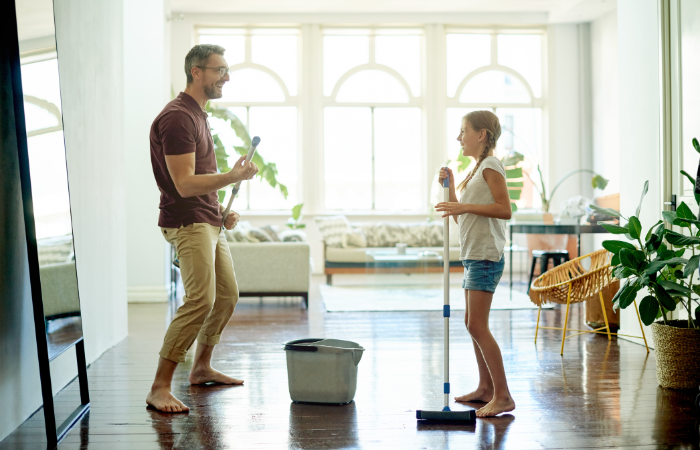
The Impact on Self-Esteem and Responsibility
Imagine your kid, broom in hand, a look of determination on their face. That’s not just dust they’re sweeping away; it’s the old notion that chores are just for grown-ups. By including them in spring cleaning, kids start to see themselves as capable contributors to the family. This boosts their self-esteem faster than you can say “sparkling clean.” Studies have shown that when children feel useful and needed, their sense of self-worth skyrockets.
Responsibility doesn’t come from lectures but from real-life experiences. Handing over a duster or assigning them specific cleaning tasks teaches kids about accountability and reliability. They learn quickly that if they don’t do their part, things don’t get done (or mom does it all, and nobody wants that).
Fostering a Sense of Accomplishment
There’s something magical about looking at a freshly cleaned room and knowing you played a part in its transformation. For kids involved in spring cleaning, this feeling is tenfold. It’s like beating the final boss level on their favorite video game but better because it’s real life.
Earning a sense of accomplishment isn’t limited to academic accolades or athletic victories; tackling and finishing chores around the house provides kids with concrete proof of their achievements, instilling an invaluable lesson that success in diverse life arenas often stems from mastering such seemingly mundane tasks.
By weaving these psychological benefits into our approach towards involving kids with spring cleaning, we nurture more than just tidy homes—we cultivate young minds ready to take ownership and pride in every task they undertake.
FAQs in Relation to Encourage Your Kids to Help With Spring Cleaning
How do you make spring cleaning fun for kids?
Turn it into a game. Race to sort laundry, have a dance-off while dusting, or create a scavenger hunt for items to put away.
How do I get my kids to help clean?
Start with clear, simple tasks and offer praise or small rewards. Show them how their efforts contribute to the family’s well-being.
How do I get motivated to spring clean?
Create a playlist of your favorite tunes. Break tasks into smaller chunks and reward yourself after each completion.
What age should kids help clean up?
Kids as young as two can start with simple tasks like picking up toys and progress from there based on ability.
Conclusion
So, you’ve explored how to encourage your kids to help with spring cleaning. We’ve journeyed through a treasure trove of advice for making the task of tidying up both enjoyable and fruitful.
Remember, starting young is key. Making chores enjoyable sparks a lifelong habit of tidiness. Creative systems like chore sticks or music-infused cleaning sessions can transform drudgery into delight.
Lead by example; children mirror what they see. Reward their efforts, making sure they feel the warmth of family appreciation.
Incorporating eco-friendly DIY solutions teaches them about sustainability while keeping it safe.
Above all, remember this isn’t just about a clean home—it’s about building life skills and stronger family bonds. Embrace these times for education, joy, and affection.
ning, and offer to keep the subscription active as long as their room is kept tidy and their chores are done.
Click Here to enter your GameFly coupon code. Use code TENDAY to Receive 10 Day Free Trial.• Offer to take your kids to their favorite amusement park or play place for completing the big chore of spring cleaning.
• Plan a family fun day where you go to the movies, a park, a favorite restaurant or all of them. Let your kids choose what they get to do on this special day.
Remember, there’s a difference between bribing and incentivizing. Incentivizing consists of providing a reward as motivation for completing a task that benefits the family.
Kids respond well to all types of rewards and only you can judge what rewards will properly motivate yours. Treat your kids to a reward and earn yourself an extra set of hands for spring cleaning.
This post may contain affiliate links. That means that if a reader clicks on a link and makes a purchase, we may get a small commission. This helps our business continue to provide you with valuable information and free stuff. So thank you for supporting our website.
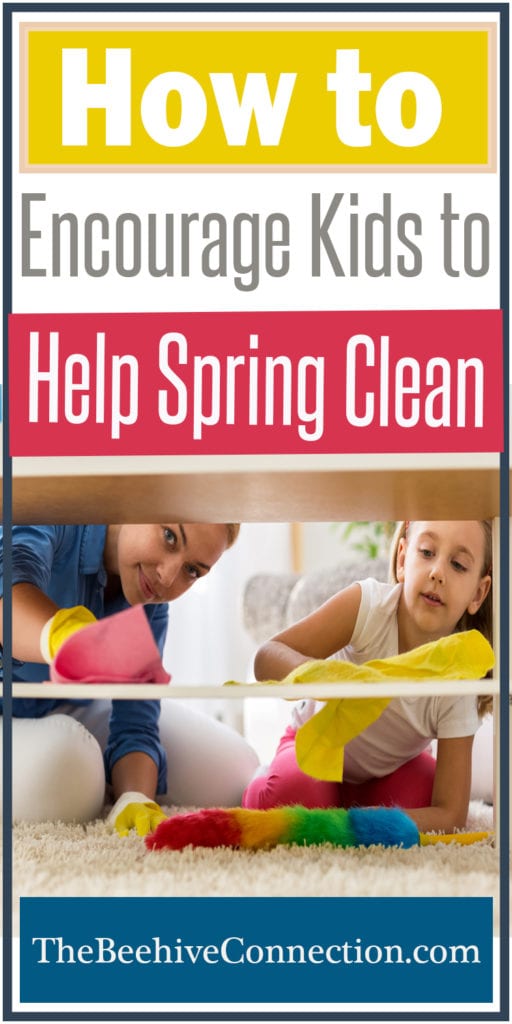
GET FREE ACCESS TO OUR LIBRARY OF FREE PRINTABLES AND RESOURCES!
Enter Your Name and Email for FREE Access to our Library of FREE Home and Family Printables Series!
